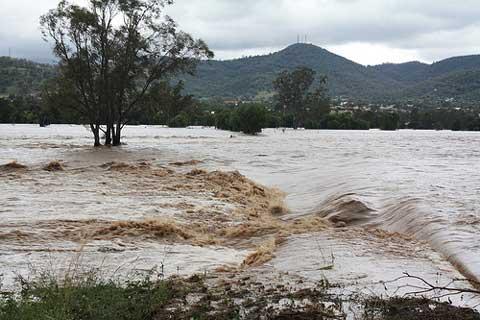Spring can be prime season in some parks for canoeing, kayaking and other types of boating. Water levels are often higher in rivers from either spring rains and/or snow melt, but when combined with ignorance or complacency, too much water can present a serious problem. Two visitors at Big South Fork National River & Recreation Area recently learned that lesson the hard way. A park report notes,
On March 15th, rangers received a report of stranded canoeists in the Alum Ford area within the park’s Kentucky District. A couple from Chicago had attempted to canoe from Alum Ford to Turkey Creek while the river was at flood stage, running at approximately 15,000 cfs (cubic feet per second). The water temperature was also dangerously cold at 45 degrees.
Within a mile, they encountered huge rapids which flipped the canoe and nearly drowned both of them. The boat and all their gear were lost. They were able to crawl out of the river and walk back upstream, clinging to rocks and branches, until they got the attention of some people back at Alum Ford and a call was made to 911.
Rangers Curtis Stone and Jimmy Barna responded and located the couple with the help of bystanders. With flood waters still rising, Stone was able to use the park’s jet boat to negotiate the treacherous whitewater to a point where he could reach the victims, who were now nearly hypothermic. Rangers and bystanders positioned themselves downstream along the river with throw bags and rescue gear as Stone ferried the man and woman back across the frigid water to safety.
No further injuries occurred and the pair were transported from the scene and made a full recovery.
This pair was very lucky, and their escapade provide a good object lesson on the dangers of boating when rivers and streams are at flood stage.
The Wisconsin Department of Natural Resources has some excellent information on "the Dangers of Paddling High Water." That site also provides a good reminder that a river isn't necessarily safe for boating as soon as flood waters recede.
Complacency kills. When flood waters recede, it’s tempting to think that the danger is past. Floodwaters pick up all kinds of debris; they also uproot trees by knocking them down and undercutting their roots. All this stuff gets deposited when the river goes down, and it creates impassable obstacles. The most dangerous are the many strainers that appear after a flood.
"Beginning paddlers ... can be victims of ignorance. Experienced paddlers, on the other hand, are at greatest risk of death from complacency. They can overestimate their skills at the same time as they underestimate the hazards of a river that has recently flooded."
"Ignorance and complacency" are two common denominators in many park tragedies, and as the recent situation at Big South Fork illustrates, dealing with both is an on-going challenge for park employees in their efforts to reduce injuries and fatalities.
A story in the Traveler last September asked the question, "How Far Should National Park Rangers Go to Safeguard Your Life?" The recent incident at Big South Fork begs two related questions: "How much responsibility should visitors be expected to take for safeguarding their own lives?" and "when ignorance and/or complacency come into play, is it accurate to call an incident an 'accident'"?




Comments
I take full responsibility for my life, my ignorance and my complacency.
“No servant brought them meals… No traffic cop whistled them off the hidden rock in the next rapids. No friendly roof kept them dry when they misguessed weather or not to pitch the tent. No guide showed them which camping spots offered a night long breeze and which a nightlong misery of mosquitoes; which firewood made clear coals and which would only smoke. The elemental simplicities of wilderness travel were thrills…because they represented complete freedom to make mistakes. The wilderness gave…those rewards and penalties for wise and foolish acts…against which civilization had built a thousand buffers.” ~Aldo Leopold~